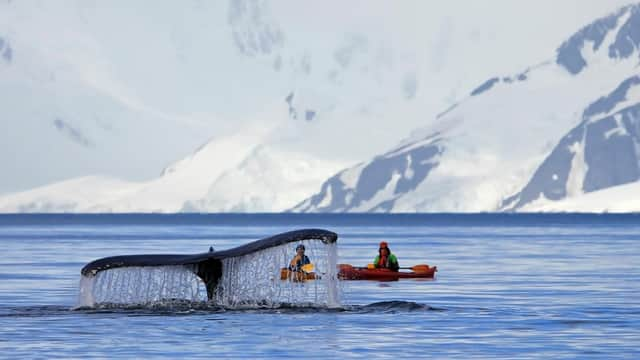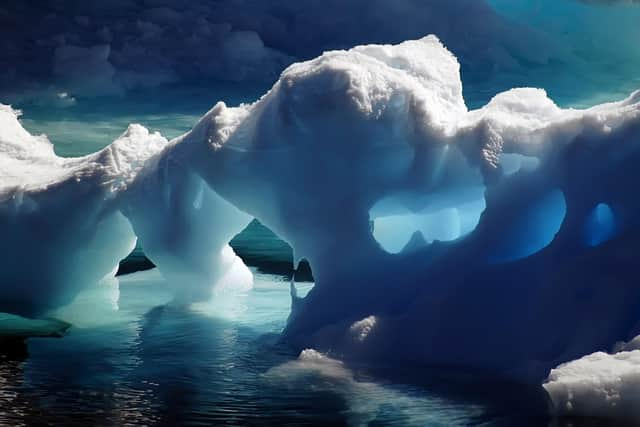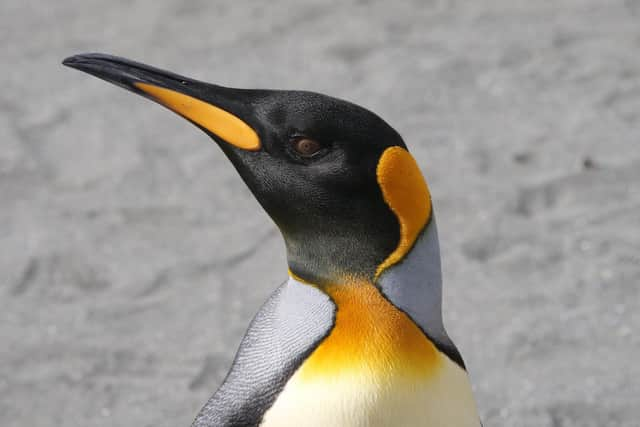The ice world of Antarctica


Ernest Shackleton and his 27 men from the Endurance landed on Elephant Island 108 years ago in April 1916 after 15 months of drifting helplessly in the Antarctic pack ice. Their ship had become ice-trapped in the Weddell Sea in January 1915.
At first they still lived aboard, but eventually had to abandon ship and watch her sink. The men then camped on drifting ice floes, but once those started to break up they hastily took to their lifeboats.
Advertisement
Hide AdAdvertisement
Hide AdAfter 71 weeks at sea, standing on dry land must have been a huge relief. However, icy windswept Elephant Island gave no more than temporary shelter. They had no way to communicate, no chance of a passing ship, no hope of rescue. Shackleton's desperate plan was to try to make the largest lifeboat seaworthy by cannibalising the smallest one.


Leaving 22 men behind, Shackleton and five men set off on the 24 April 1916 in the James Caird, a 23-foot lifeboat with improvised sails, no keel, no engine and no means of navigation beyond a sextant. Their goal was to sail to South Georgia, some 800 miles away across the ferocious Southern Ocean.
They finally reached the whaling station at Stromness on 20 May 1916 after a long, sleepless trek across the island's unmapped mountainous interior. It took a further three months to rescue the stranded men, the first three attempts being defeated by the pack ice surrounding Elephant Island in the Antarctic winter.
Shackleton's original plan had been to cross the continent via the South Pole to reach supplies left by a support group from his other ship, Aurora. Instead, Endurance had been captured by pack ice before they even landed.
The Aurora group suffered terrible hardships during their pointless labours of man-hauling two tonnes of supplies for a team that never came within 2000 miles of them. In addition to injuries and illness, they sustained three deaths. The seven survivors were eventually rescued in January 1917.Shackleton was a brilliant self-publicist who spun his failed expedition as a successful rescue. His book South (1919) has never been out of print. Although he is justly celebrated for his persistence in saving his stranded men, his expedition was deeply flawed, badly planned and financially disastrous.


The Endurance story continues to fascinate people, and in 2022 a search expedition finally discovered the wreck on the seabed beneath two miles of Weddell Sea. The date was 5 March, the exact centenary of Shackleton's burial on South Georgia. I was lucky enough to be in Antarctica at the time.So why was I there? My lifelong fascination with the place had resulted in a large Antarctic library but huge frustration that none of these books told me what I needed to know before I could book a suitable cruise. I ended up writing the book that I had so badly needed. It felt vital to illustrate it with professional mapping, plenty of diagrams and 100 colour photos. Its first 32 pages are devoted to factors to consider before choosing an itinerary, a ship or departure month.
All visitors to Antarctica go during austral summer (October to March), but which month you travel and where you can land determines which wildlife you will see, and what stage they'll have reached. Whether the penguins will be mating or laying, whether their chicks are hatching or fledging – it all depends on the season and location. Timing also affects the size and shapes of the icebergs, the number of daylight hours and the likely weather. And it affects the price, with December/January being peak season.
Before choosing a trip, work out your geography and travel times. Starting from Edinburgh, it took me three days to reach Ushuaia, southernmost city of Argentina, with a margin of safety to board my cruise ship. We then made a 3500-mile circuit that visited both South Georgia and the Falklands.
Advertisement
Hide AdAdvertisement
Hide AdSome itineraries ignore those sub-Antarctic islands and spend more time in Antarctica itself. I was determined to visit South Georgia, not merely for its human history of whaling and exploration, but also for its spectacular wildlife. We visited a beach with half a million breeding pairs of King penguins. I will never forget the sight, sound and, above all, smell.Consider also whether you want a ship with specialist activities.
Every cruise includes landings where possible, but some offer snowshoeing, kayaking, camping on the ice or even a polar plunge. I had set my heart on sea kayaking because it seemed to offer a silent way to approach wildlife and get close to icebergs. The four of us who did it were incredibly lucky: after only 20 minutes, a humpback whale dived about 15 metres away from the kayaks, treating us to a show of his tailfin.
The ship itself is the single most important choice you make. Size matters. Under the Antarctic Treaty, a ship with 500-plus passengers won't be allowed to land at all, and a ship with 100-plus passengers can't land them all at once so a shift system is needed.
So if your priority is time ashore, rather than onboard entertainment, go on the smallest ship that you can.
Once you've booked, you'll need help with identifying all the wildlife that you'll see from your ship and on your landings. The second part of my book is all about what you'll see when you get there. Wildlife starts from seabirds, then explains the eight kinds of penguin you may meet, and how they feed and breed.
Seals range from small, cute-looking fur seals up to the world's largest, the Southern elephant seal. Bulls can weigh up to four tons and they outperform most whales as swimmers and divers.From your ship, especially if you travel in January or February, you may see a wide variety of whales.
We were lucky enough to see a pod of ten blue whales, the largest animal that has ever lived. Antarctica is a hostile continent – the world’s coldest, windiest and highest – and it has no land animals. However it’s surrounded by the world’s most fecund ocean.
The scenery is otherworldly. Such simple ingredients – frozen water, air and wave action – sculpt the most amazing icebergs. Some have arches, pinnacles and fluting, others host a bunch of penguins or a predatory leopard seal. My book explains the formation and life story of an iceberg and what creates the different shapes and colours. Contrary to popular belief, the 'tip of the iceberg' varies widely, ranging from 1 per cent to 50 per cent of its total volume.
Advertisement
Hide AdAdvertisement
Hide AdAntarctica is a place of extremes, and it's full of surprises. Its average altitude is 7500 ft – but only because of the vast thickness of its ice sheet: over 40 per cent of its bedrock lies below sea level. It is the world’s reservoir, storing 90 per cent of its freshwater ice, yet it is an extreme desert with precipitation less than 25 per cent of Australia.
During the last four years, Antarctica’s visitor numbers have doubled to more than 100,000. Given the need to protect this fragile continent, further restrictions seem inevitable. Most people book their cruises at least a year ahead, some two years. Go before it’s too late, but be warned: many people who visit end up wanting to return.Antarctica: Guide to Your Adventure by Jacquetta Megarry is out now, priced £15.99, published by Rucksack Readers